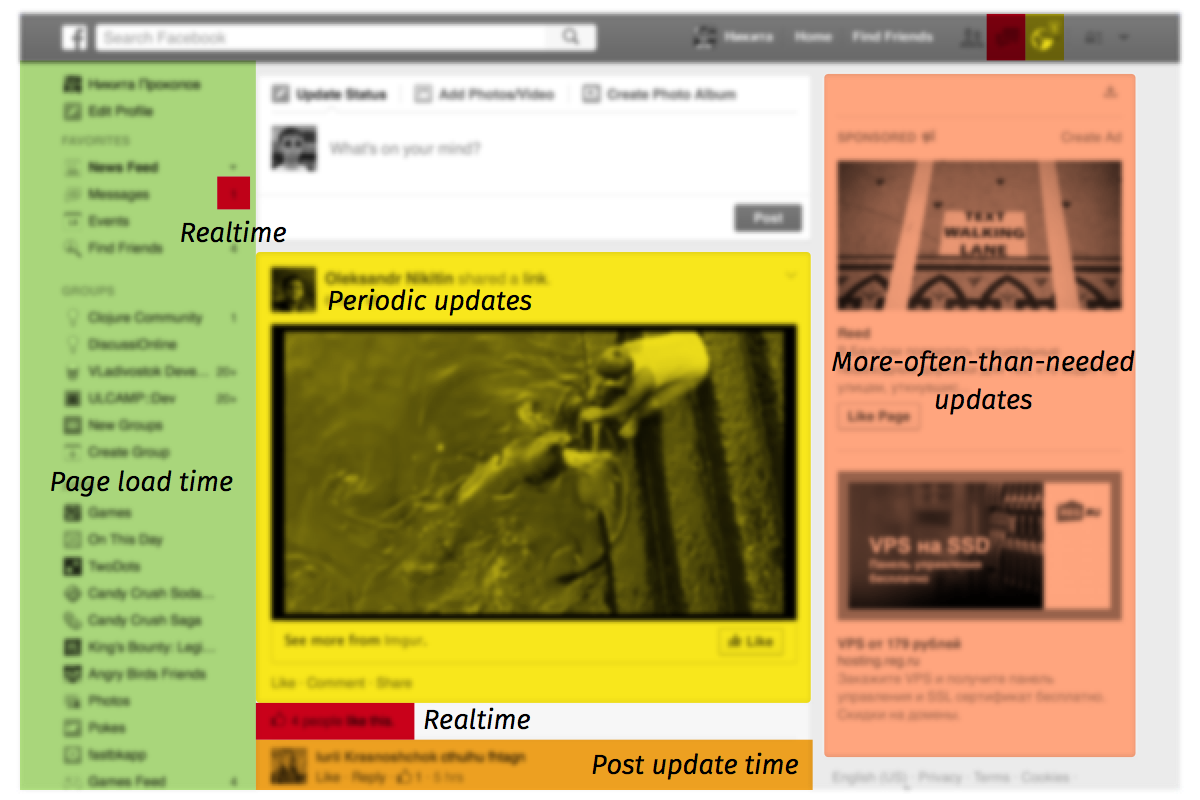My current venture is Storrito.com where we had the chance to develop a system with Clojure, ClojureScript and Datomic from the ground up.
This blog post series is about my attempt to implement The Web After Tomorrow that Nikita described in his blog post back in 2015.
In this blog post Nikita describes how modern real-time web applications should work. While the technology exists many web applications are still not fully real-time. Instead there are often multiple sections which have different levels of staleness. As an example he shows the Facebook web application:
 (image source: https://tonsky.me/blog/the-web-after-tomorrow/)
(image source: https://tonsky.me/blog/the-web-after-tomorrow/)
There are sections like the sidebar menu which are never refreshed after the page load. While other sections like the messenger and the unread message count receive real-time updates.
At the end of the blog post Nikita describes how a full real-time web application might be implemented by using a combination of Datomic and DataScript. For the initial implementation of Storrito I followed this concept idea and tried to build a full real-time web application. On the server we were already using Datomic. On the client-side we added DataScript to our Reagent-based ClojureScript app.
To avoid the complexities of premature performance optimizations and to have a first working version ready, I took an extreme shortcut. Instead of only loading the datoms which are relevant for the current UI state, we just loaded the complete customer database on the initial page load.
This shortcut worked much longer than expected, since Storrito is a single-page application (SPA) and our users only needed to wait a little bit longer at the initial page load. Afterwards all changes were pushed in the form of small deltas (datoms) to the client.
The database portion that needed to be loaded was very small for a normal user (only a few hundred datoms). But the number of datoms grows every time the user creates or changes entities. Most of the users had to wait between 1-3 seconds at the initial page load.
Luckily from a business perspective there were and still are many very frequent users, which creates hundreds or even thousands of new datoms every day. They needed to wait around 20-40 seconds for the initial page load. As you can imaging loading the entire customer database had become an unacceptable option soon.
In the next blog post I will describe some of the ideas we had how to solve this challenge.